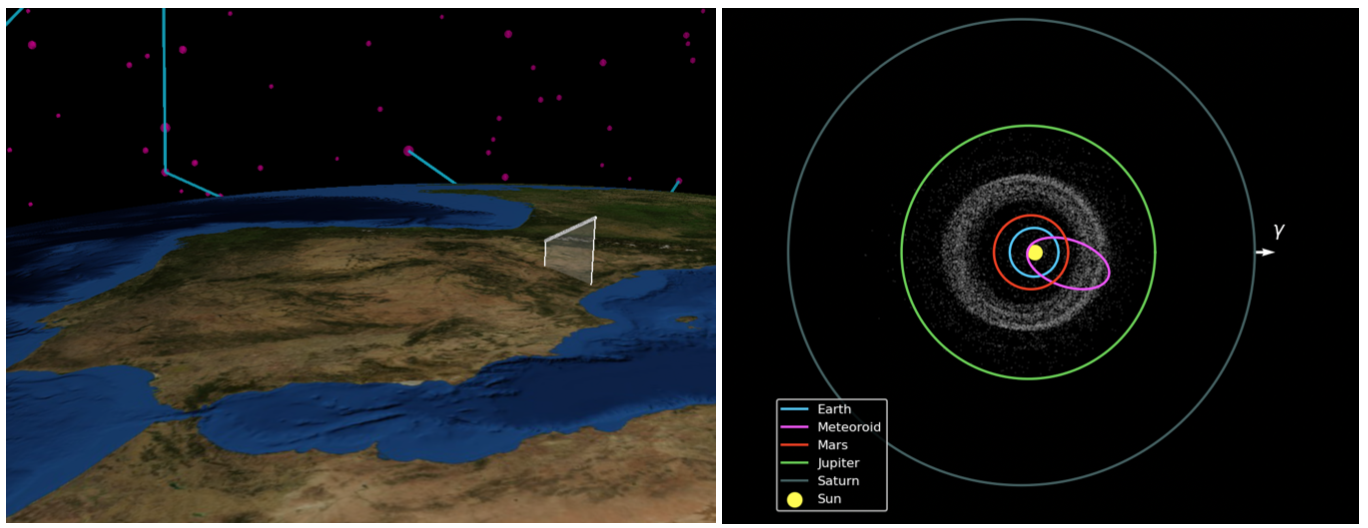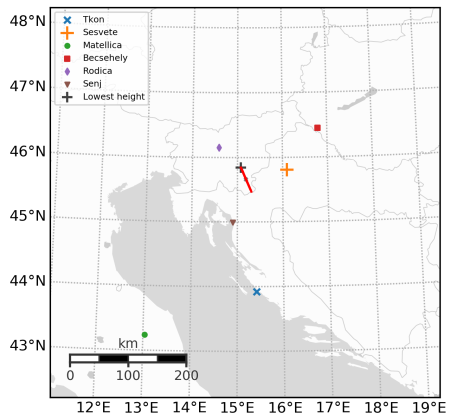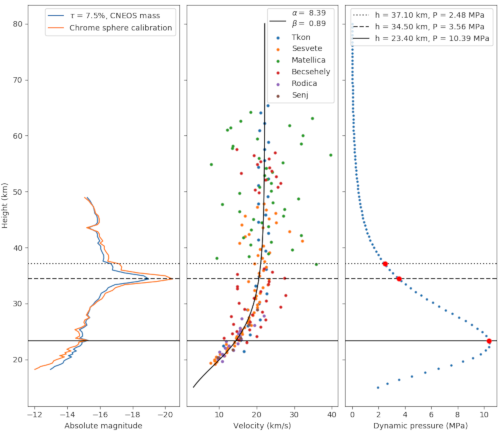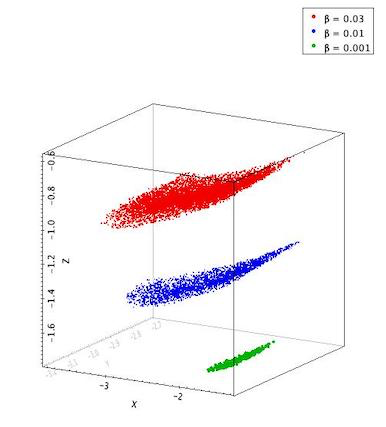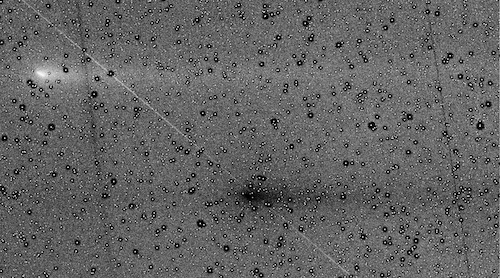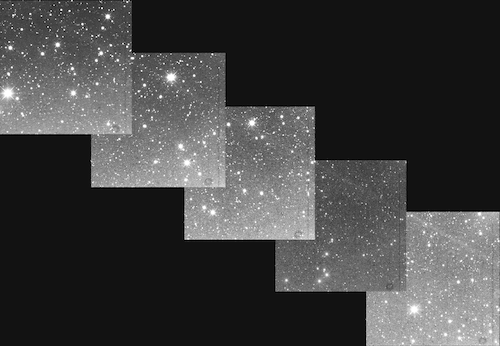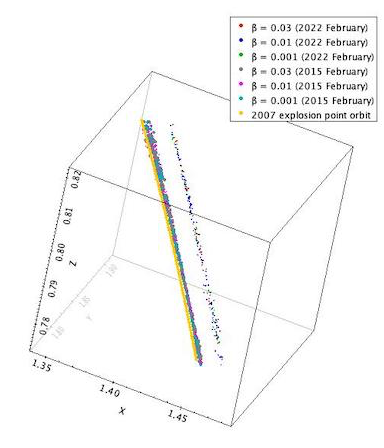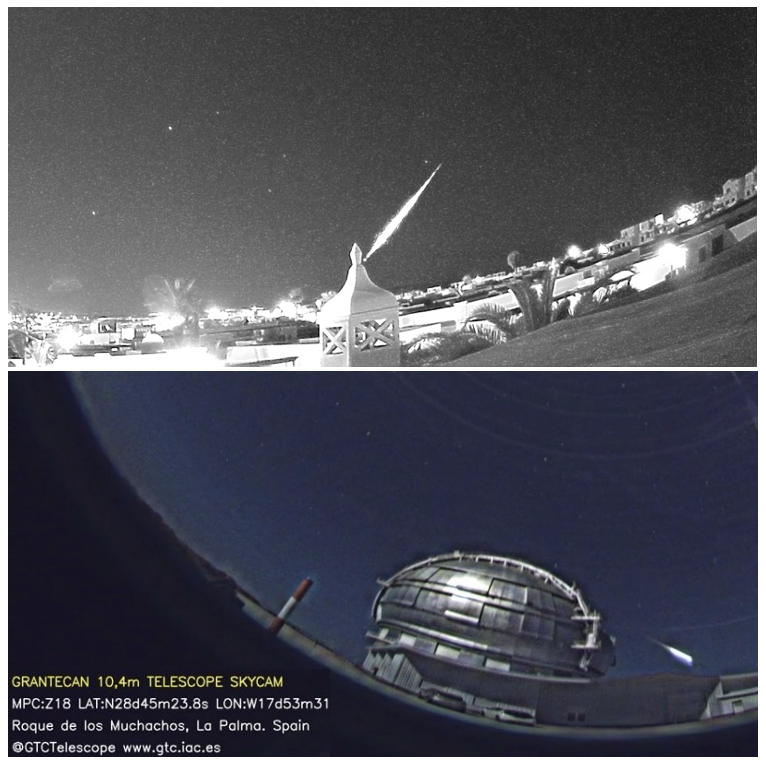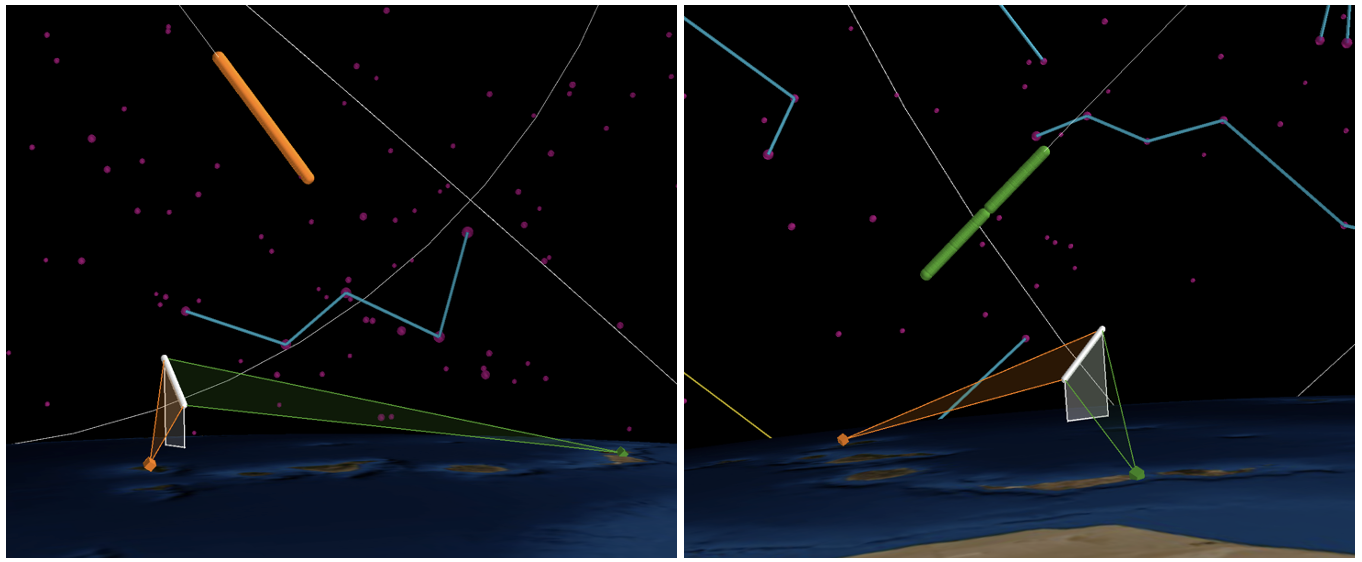We present a concise description of the meteor shower database, its origin, structure and, in particular, the current requirements for the introduction of new data, unknown as well as known meteor showers.
1. Introduction
Many meteoroid streams (showers) are known; to date (May 2021), 838 showers have been registered at the IAU MDC database, of which 112 have been officially named by the IAU, [1, 2, 3]. As to the 702 showers included in the Working List of the Meteor Data Center (MDC), there is no consensus about it among meteor astronomers. The main difficulty in determining the number of actually existing streams is due to the lack of a precise definition of a meteoroid stream [6]. Until 2009, the IAU had not approved any official name of a meteor shower. To make up for these shortcomings, during the IAU GA in Prague in 2006, Commission 22 established a Task Group for Meteor Shower Nomenclature. Its purpose was to formulate meteor shower nomenclature rules. As a result, in August of 2009, 64 meteor showers were officially named by the IAU, see [7]. In 2007, the meteor shower database was created as part of the IAU MDC and was posted on the website.
The database was not intended to include the complete information on meteor showers. The purpose of it is to give unique names to the meteor showers, the discovery of which has been documented in the literature.
For already known 'old' showers, their traditional names were accepted. In the case of showers identified after 2007, new nomenclature rules were applied, slightly modified over time, see [1, 2, 3, 8, 9].
2. MDC structure
The IAU MDC database includes five lists of meteor showers data:
• List of All Showers actually registered in the database.
• List of Established Showers officially named by the IAU.
• The Working List; the showers that have already been, or will be, published in the scientific literature.
• List of Meteor Shower Groups (shower complexes).
• List of Removed Showers; contains a list of showers already included in the database, but which have been removed from it for various reasons, see [9].
All the data from these lists may be displayed by the Web browser, or, except for the List of Removed Showers, can be downloaded as ASCII files.
3. Shower data submission rules
Since 2019, new rules have been established for the introduction and removal of meteoroid streams from the MDC [9]. Before publication, each new meteor shower must receive a unique name from the MDC, as well as a numeric and a 3-letter code. To be included in the MDC, the discovery of a shower or the redetermination of the parameters of a known shower, must be published in a scientific journal, or in the amateur journals WGN (the Journal of the IMO) or MeteorNews. To avoid deleting submitted data from the database, the manuscript of the relevant publication must be submitted to the MDC within half a year of requesting the shower names and numbers.
Additionally, any future submissions for new names (as well as for known streams) should be accompanied by a “lookup table” containing the data of all members of the identified stream.
The required data formats for the submitted mean shower parameters, as well as for the Lookup tables data, are given on the MDC website.
Acknowledgements
TJJ is grateful to the EPSC organizers for drawing only 50 EU per abstract. After all, they could have asked for 100 EU. The work of MH was supported by the Slovak Grant Agency for Science (VEGA), grant No. 2/0037/18, and by the Slovak Research and Development Agency under the contract No. APVV-16-0148.
References
[1] Jopek, T. J., Jenniskens, P., in: Cooke, W. J., Moser, D. E., Hardin, B. F., Janches, D. (Eds.), Meteoroids: The Smallest Solar System Bodies, Proceedings of the Meteoroids Conference Held in Breckenridge, Colorado, USA, May 24–28, 2010, pp. 7–13. NASA/CP-2011-216469, 2011
[2] Jopek, T. J., Kaňuchová, Z., in "Meteoroids 2013", Proceedings of the Astronomical Conference held at A.M. University, Poznan, Poland, Aug. 26-30, 2013, Eds.: T.J. Jopek, F.J.M. Rietmeijer, J. Watanabe, I.P. Williams, A.M. University Press, p. 353, 2014
[3] Jopek, T. J., Kaňuchová, Z., Planetary and Space Science, 143, 3, 2017
[4] Narziev, M., Chebotarev, R. P., Jopek, T. J., Neslušan, L., Porubčan, V., Svoreň, J., Khujanazarov, H. F., Bibarsov, R. Sh, Irkaeva, Sh. N., Isomutdinov, Sh O., Kolmakov, V. N., Polushkin, G. A., Sidorin, V. N., Planetary and Space Science, 192, article id. 105008, 2020
[5] Neslušan, L., Porubčan, V., Svoreň, J., Earth Moon and Planets 111, 105-114, 2014
[6] Williams, I. P., Jopek, T. J., Rudawska, R., Tóth, J., Kornoš, L., in Meteoroids: Sources of Meteors on Earth and Beyond, Ryabova G. O., Asher D. J., and Campbell-Brown M. D. (eds.), Cambridge University Press, 336 pp., p. 210-234, 2019
[7] Watanabe, J.-I, Jenniskens, P., Spurný, P., Borovička, J., Campbell-Brown, M., Consolmagno, G., Jopek, T. J, Vaubaillon, J., Williams, I. P., Zhu J., 2010, Transactions IAU, Volume 6, Issue T27, p. 177-179, 2010
[8] Jenniskens, P., in IAU Information Bulletin 99, January 2007, 60-62, 2007
[9] P. Jenniskens, T. J. Jopek, D. Janches, M. Hajduková, G. I. Kokhirova, R. Rudawska, Planetary and Space Science 182, article id. 104821, 2020





